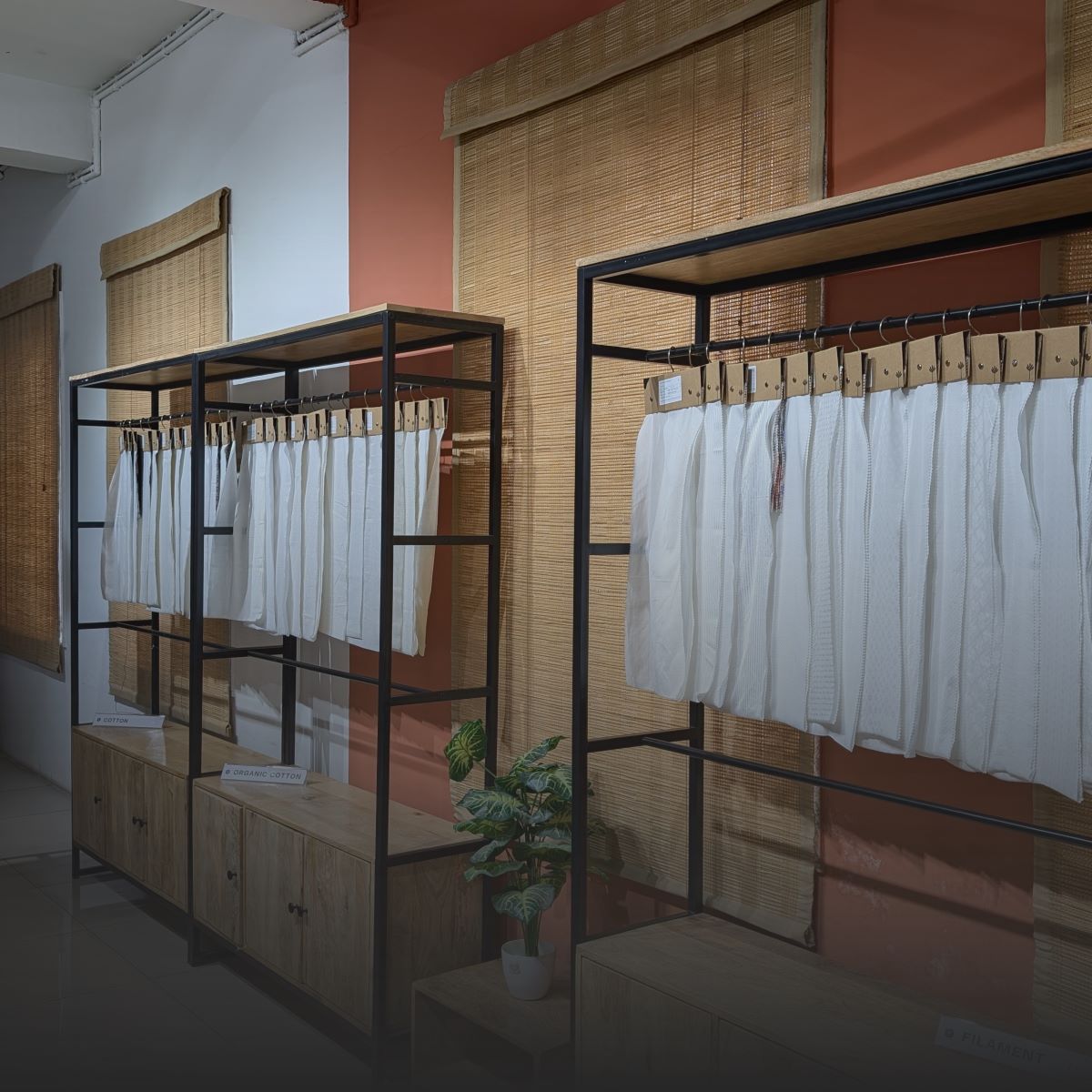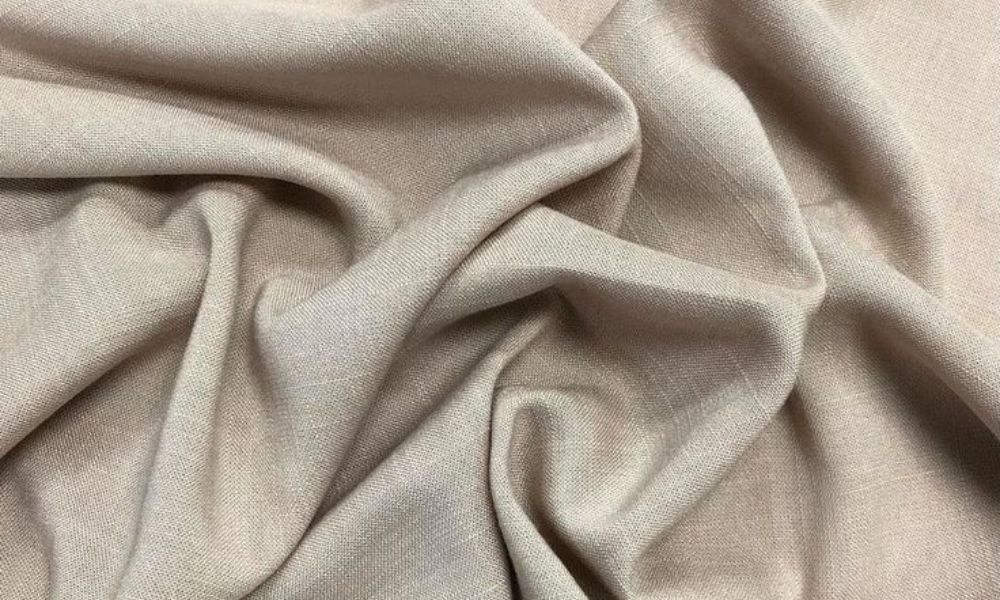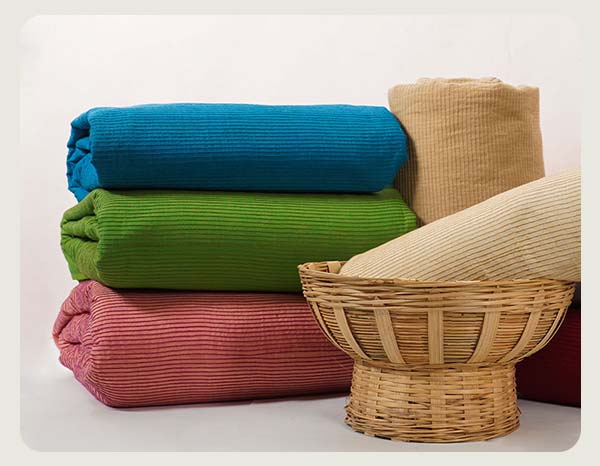As fashion demand continues to grow, garment manufacturers in the USA and beyond are stepping up their production efforts. Scaling can lead to more profits, a wider audience, and faster reactions in the market, no matter if you're just starting out or already a well-known brand. There is a downside to consider – higher volume can sometimes lead to lower quality, which is a risk that many clothing brands choose to steer clear of.
If you're a USA-based apparel factory, a low MOQ clothing manufacturer in the USA, or a D2C fashion startup aiming to grow, balancing quality with expansion can be both challenging and rewarding. Brands may grow while maintaining quality by using the correct methods, partners, and technology, like AI. Watch the article below to learn how to scale textile manufacturing without sacrificing quality.
Also Read : Low MOQ Garment Manufacturing Simplified in the USA
Why Quality Often Declines When Scaling

As clothing production goes up in size, it gets more complicated—more workers, more clothes, and shorter deadlines. These kinds of things often lead to inconsistent output if the right systems are not in place. The most common reasons why quality declines in mass garment production are as follows:
- Lack of Standardized SOPs
Different groups or workers may have other ideas about how to do things if there aren't clear Standard Operating Procedures. This could cause differences in stitching, sizing, and finishing.
- Unskilled or Undertrained Labor
When a business grows quickly, it may have to hire people quickly without giving them the right training. This leads to mistakes, bad work, and a higher rate of defects.
- Over-reliance on Manual Workflows
When time is tight, manual methods are more likely to make mistakes. It is harder to keep quality control in check when there is no automation in garment manufacturing.
- Inconsistent Fabric Sourcing
When you use more than one supplier to meet your volume needs, colours, textures, or GSMs may not match up, which can cause problems with the end product.
- Weak Quality Control Systems
When only end-of-line checks are done, and no in-line checks are done, flaws can build up and go ignored until it's too late.
- Pressure to Meet Tight Deadlines
To get things done quickly, teams often skip important checks, cut corners, or don't follow quality standards.
- Poor Communication Between Teams or Units
When things are made in more than one place, if there isn't unified production management, miscommunication can cause mistakes in the specs, fabric choices, or patterns.
Let's look at a real-life example: Let's say that a custom clothing manufacturer in the USA just got an order from a big store for 5,000 items. Their usual supplier can only get them 60% of the fabric they need, so they quickly find another seller to get the rest. The customer does notice that the cloth dye lot isn't quite right, though. When you scale up, you take a risk with your business.
To stay away from these problems, systems need to be built not just for growth but also for quality at scale.
Strategies For Scaling Up Your Garment Manufacturing Business

To make your clothing production more efficient, you need more than just more clothes. You also need well-thought-out processes, skilled workers, and partnerships you can count on. In the fashion supply chain, it's important for clothing manufacturers in the USA to keep quality high while growing. You can't just scale up overnight.
1. Standardize Production Processes
As the amount of production goes up, output becomes less consistent. To keep quality from dropping, you must set up processes that are the same across your whole production line. For Fashion manufacturing companies in the USA that work with different places or suppliers, this is very important.
- Create Standard Operating Procedures (SOPs) for every process, including stitching, cutting, finishing, and packaging.
- Document machine settings and calibration schedules for different garment types.
- Define quality checkpoints at all stages—pre-production, mid-line, and post-finish.
- Use visual aids, checklists, and digital workflow systems to reduce human error.
- Standards enable private label clothing manufacturers in the USA maintain brand consistency while outsourcing.
For example, an emerging USA clothing production company implemented SOP videos in Spanish and English to train new workers in outsourced Mexico units—cutting defect rates by 35% within a quarter.
2. Invest in Skilled Labor and Continuous Training
Hiring low-cost labour might seem like a smart move for startups, but poorly trained staff can lead to high rejection rates. For apparel manufacturers in the USA, building a trained, adaptable workforce is vital to manage scaling effectively.
- Develop training modules and onboarding manuals for every new hire.
- Offer machine-specific certifications for tailors and machine operators.
- Conduct monthly quality and skill workshops to upgrade stitching and finishing techniques.
- Recognize and reward high-efficiency employees with incentives.
- This investment helps Custom Clothing Manufacturers USA minimize rework and maintain quality at higher volumes.
3. Implement Multi-Stage Quality Control Systems
Scaling is not just about producing more—it's about making it better. Multi-tiered QC systems help identify defects early and ensure that quality is monitored across the board for both in-house and outsourced production units.
- Pre-production QC: Validate trims, patterns, and fabric specs before bulk cutting.
- In-line inspections: Set checkpoints after every major operation, like stitching, printing, or embroidery.
- Post-production audits: Check for stains, mislabeling, and measurement mismatches before packing.
- Implement digital defect-tracking systems to monitor trends and reduce repeat errors.
- A strong QC protocol sets USA-based garment factories apart in global markets.
According to industry case studies, multi-stage QC reduces product returns by up to 40%—a crucial KPI for wholesale clothing manufacturers in the USA.

4. Adopt Technology and Automation
Technology can help reduce dependency on manual processes while maintaining consistency. USA clothing production companies adopting automation and AI tools can ensure precise scaling without quality lapses.
- Use CAD software for precise pattern drafting and grading.
- Adopt PLM (Product Lifecycle Management) tools for managing design to delivery.
- Implement automated fabric cutters to reduce human errors.
- Use AI-powered production planning software to forecast demand and track progress.
- Smart tech allows wholesale clothing manufacturers in the USA to meet growing orders without compromising quality.
5. Partner with Reliable Suppliers
Your finished garment's quality is only as good as the fabric and trims that go into it. For low MOQ clothing manufacturers in the USA, having a dependable supplier is crucial for scaling without production delays or material inconsistencies.
- Choose vendors with consistent quality certifications (GOTS, OEKO-TEX).
- Establish long-term supplier agreements with clear SLAs.
- Use platforms like Fabriclore for digital sourcing, real-time tracking, and custom bulk prints.
- Ask for lab tests and swatch approvals for new collections.
- Reliable sourcing partners are key to sustainable scaling for private-label clothing manufacturers in the USA.
Explore Fabriclore's Fabric Sourcing Services
6. Set Up Pilot Batches Before Mass Production
Launching a new collection or scaling to a new market? Test the waters first. For startup garment manufacturers in the USA, pilot batches help fine-tune processes and prevent large-scale wastage.
- Produce a small batch (50–200 units) to test patterns and QC processes.
- Review stitching strength, colourfastness, and finishing in real-time conditions.
- Use pilot feedback to adjust machine settings or design tolerances.
- Evaluate supplier responsiveness and delivery schedules.
- Pilot runs can prevent massive losses and build reliability when you scale.
A Los Angeles-based sustainable brand scaled from Etsy to big-box retail by testing each new collection with a 100-piece pilot run—saving them from major reworks later.
7. Diversify Yet Consolidate Manufacturing Units
As your name grows, you may need to open more factories or move to different areas. When clothing manufacturers in the USA outsource some of their production, all of their groups must follow the same standards.
- Every factory should follow the same SOPs and training.
- Send central quality heads to check the work of each unit.
- Every so often, groups should share data and improvement plans.
- For flexibility, keep a mix of in-house and outsourced production.
- Diversification lowers risks like supply chain breakdowns, while consolidation makes sure that everything is the same.
What are the best B2B platforms to buy custom clothing in bulk? We wrote a piece called Best B2B Platforms to Buy Custom Apparel in Bulk to help you choose one.
A company that worked with three factories in the US and Vietnam cut down on mistakes by using Trello and Slack to share real-time dashboards with suppliers.
8. Prioritize Sustainable and Certified Practices

Sustainability shouldn't be sacrificed in order to grow. Global buyers now want businesses to act in ways that are moral, safe, and good for the earth. Certifications not only help people trust USA-based garment factories, but they also let them get into high-end markets.
- The materials you buy should be GOTS-certified organic fabrics.
- Make sure that ISO 9001 for quality systems is followed.
- To follow chemical safety rules, use OEKO-TEX-certified dyes and trims.
- Labels and books should make certifications easy to read.
- When custom clothing manufacturers in the USA are trying to reach environmentally conscious customers, sustainable practices are even more important.
9. Use Data Analytics for Decision-Making
When growing, you can't just guess. Apparel manufacturers in the USA can make good choices about production schedules, staffing needs, and buying materials by using data-driven insights.
- Keep an eye on defect trends by product or machine type.
- Keep an eye on worker productivity and training ROI.
- Dashboards can help you find fabric waste per SKU.
- Look at the reasons customers return to make the pattern or stitching better.
Making choices based on data helps you grow without hitting any problems.
Even small custom clothing manufacturers in the USA can improve their processes without hiring full-time analysts by combining AI-based analytics platforms like Zara's Inditex uses or low-cost ERP tools.
10. Work With Strategic Partners
You don't need to climb by yourself. Strategic partners, such as wholesale clothing manufacturers USA or digital printing experts, can help keep quality high while easing the workload.
Work together on sites like Fabriclore to:
- On-demand digital printing
- Custom fabric sourcing
- Low MOQ production support
- Global delivery logistics
Strategic relationships help garment manufacturers in the USA focus on growth while keeping things consistent on the back end. We work closely with both new and old apparel manufacturers in the USA to make sure that the standard of the fabrics matches the goals of the brand.
Start your scaling journey with Fabriclore.com
Conclusion: Scale Smart, Maintain Quality

Even if more clothes are made, the quality can still stay good. Companies that make clothes in the US can grow and be consistent by following standard operating procedures (SOPs), hiring skilled workers, using automation tools, and working with reliable suppliers like Fabriclore. Pilot runs, long-lasting methods, and making decisions based on data all help make growth easier.
No matter if you're a Low MOQ clothing manufacturer USA or a big apparel brand, the important thing is to create systems that ensure quality as you grow. Using the right strategies and partners can help you scale your business, increasing profits while keeping the craftsmanship that defines your brand.
Start scaling the right way—partner with Fabriclore for reliable fabric sourcing and low-MOQ custom solutions.
Click Here! For More Related Information : How to Launch a Fashion Brand in the USA with the Right Garment Manufacturing Partner
FAQs
1. How Do Garment Manufacturers Maintain Quality In Mass Production?
To keep quality high during mass production, you need a mix of technology, skilled labour, and strict quality control rules. It is important for garment manufacturers in the USA to follow structured SOPs and keep training their employees.
- Standardize every step with documented SOPs.
- Set up multi-stage quality control inspections.
- Use digital tools for defect tracking and process monitoring.
- Regularly train staff to improve consistency across batches.
2. What Is The Most Efficient Way For Small Fashion Brands To Scale Production?
There are smart, low-risk steps that small brands can take to grow. It's important to try and improve things before going full-scale.
- To test production methods, start with small batches.
- Work with low MOQ clothing manufacturers USA.
- Use automated tools to cut down on the need for human work.
- When looking for bulk fabric, work with reliable sellers like Fabriclore.
3. Does Outsourcing Garment Production Affect Quality Control?
Yes, exporting can lower quality if it's not done right. Brands need to set clear processes and accountability in order to keep standards consistent.
- Make sure that all units follow the same SOPs.
- Put together a team of quality control inspectors.
- Use regular checks and share lots of problems.
- Pick USA clothing production companies that have been checked out and have good track records.
4. What Technologies Help In Scaling Garment Manufacturing Without Losing Quality?
To scale production smoothly, people need to use technology. Technology makes everything more accurate, faster, and easier to track, from creation to delivery.
- CAD software to make moulds more accurately.
- PLM tools for managing the whole production process.
- RFID inventory tracking to see what's there.
- Bugs will be found automatically in real-time by AI-powered QC systems.
5. Why Is Fabric Sourcing So Important For Large-Scale Garment Production?
The quality of the fabric has a direct effect on the finished outfit. As your business grows, fabrics that don't match up can cause problems, more returns, and unhappy customers.
- It's best to work with reliable bulk fabric suppliers like Fabriclore.
- Pick providers that have labels like GOTS or OEKO-TEX on their products.
- Make sure that all lots have the same GSM, weave, and dye.
- Use digital printing that is made just for your brand.
We also happen to be a magnet for suggestions, and would love to catch yours….throw us yours on hello@fabriclore.com




